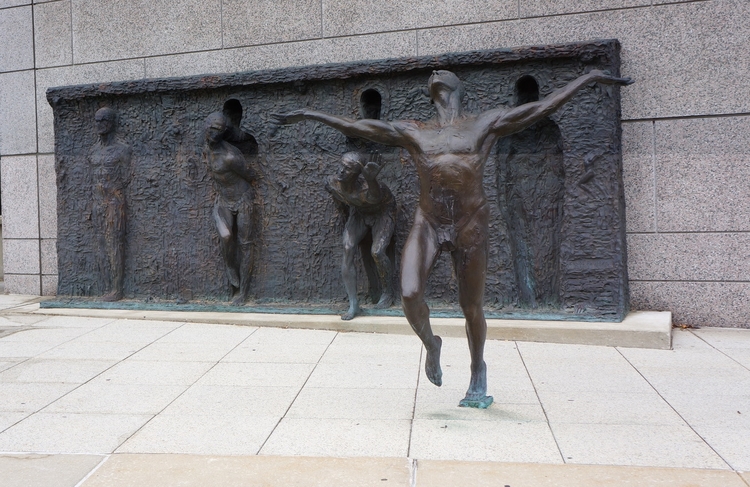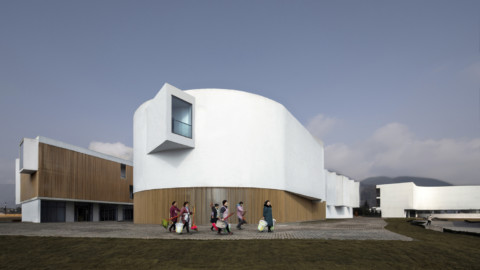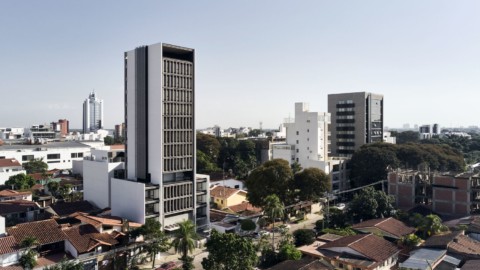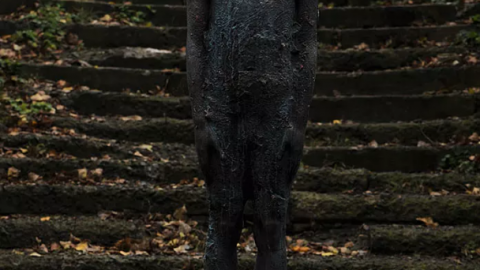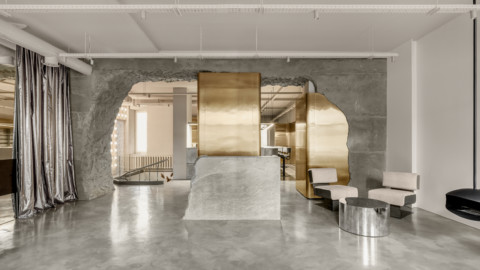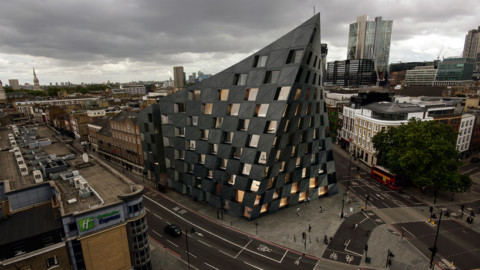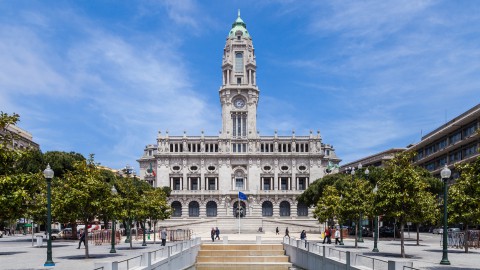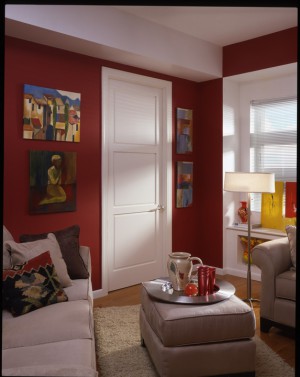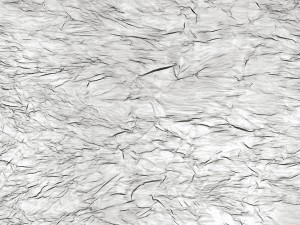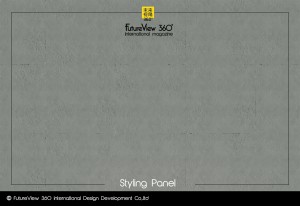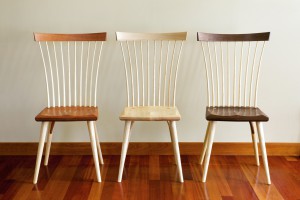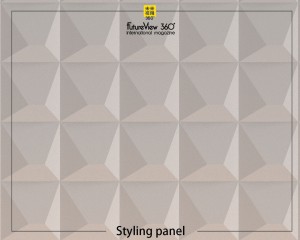The desire for freedom statue
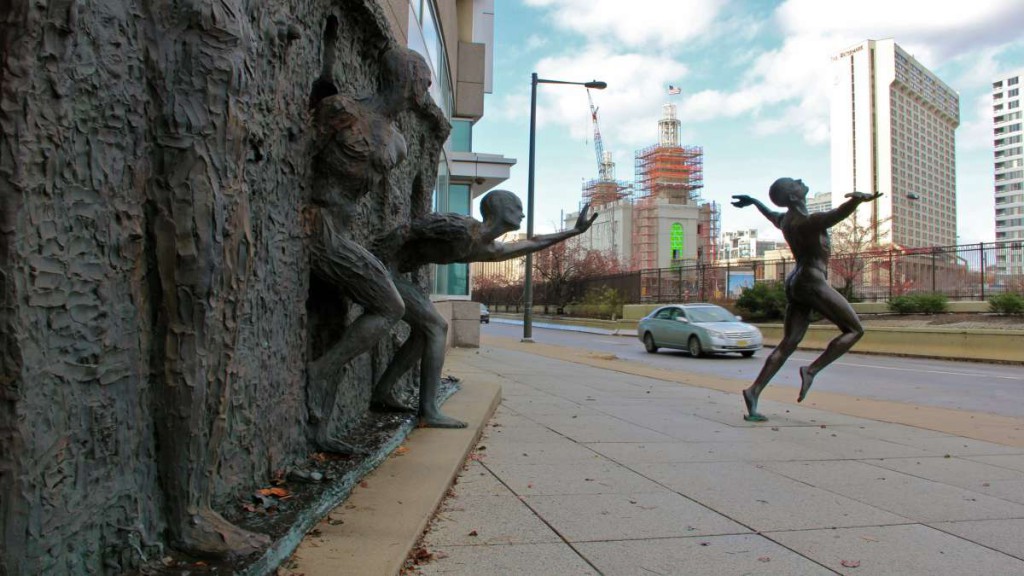
“I wanted to create a sculpture almost anyone, regardless of their background, could look at and instantly recognize that it is about the idea of struggling to break free. This sculpture is about the struggle for achievement of freedom through the creative process.”
– Zenos Frudakis
“我想創造一個雕塑,幾乎任何人,無論他們的背景如何,都可以看到並立即認識到這是關於努力擺脫自由的想法。這個雕塑是關於通過創作過程實現自由的鬥爭。”
– Zenos Frudakis
Freedom Sculpture Specifications
Size: 20 feet long x 8 feet high
Weight: 7,000 pounds
Media: Bronze
Sculptor: Zenos Frudakis
Date of Dedication: June 18, 2001
Location: 16th and Vine Streets, Philadelphia, Pennsylvania
自由雕塑規格
尺寸:20英尺長x 8英尺高
重量:7,000磅
媒體:青銅
雕塑家:Zenos Frudakis
奉獻日期:2001年6月18日
地點:賓夕法尼亞州費城的第16街和藤街
Although for me, this feeling sprang from a particular personal situation, I was conscious that it was a universal desire with almost everyone; that need to escape from some situation—be it an internal struggle or an adversarial circumstance, and to be free from it.
I began this work in a very traditional sculptural manner by creating a small model in clay called a macquette. The purpose of beginning in this manner is to capture the large action and major proportions of the figure within the overall design without any details to detract from the big idea. Another reason for not having details and for working on a small model only a few inches in height is that the small armature within it, holding the clay, is more easily manipulated, allowing for much greater flexibility in developing a concept. For example, an arm, a leg or a head can be pushed around without any concern for obliterating details, such as a nose or a finger.
– Zenos Frudakis
雖然對我而言,這種感覺源於某種特定的個人情況,但我意識到這幾乎是每個人的普遍願望;需要擺脫某種情況 – 無論是內部鬥爭還是對抗性環境,並擺脫它。
我以一種非常傳統的雕塑方式開始這項工作,創造了一個叫做macquette的粘土小模型。以這種方式開始的目的是在整體設計中捕捉圖形的大動作和主要比例,而沒有任何細節偏離大的想法。沒有細節和在高度只有幾英寸的小型模型上工作的另一個原因是它內部的小型電樞更容易被操縱,從而在開發概念時具有更大的靈活性。例如,可以推動手臂,腿或頭部而不用擔心擦除細節,例如鼻子或手指。
– Zenos Frudakis
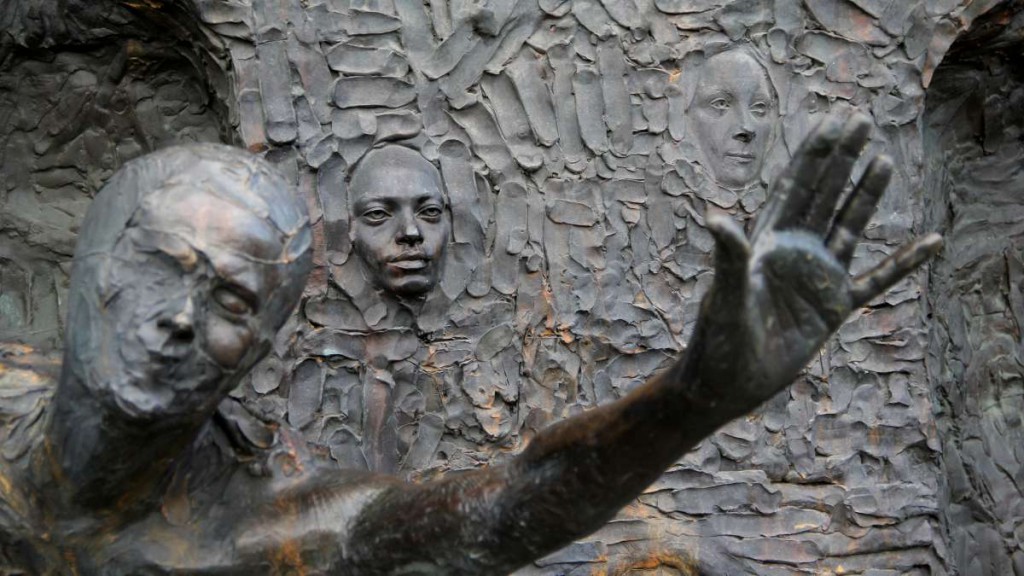
The macquette is the original mass of clay where a concept is born and from which it grows and develops. This was important later when I enlarged the sculpture from several inches long to 20 feet long, and I retained in the larger work a sense that all the conceptual material, its forms, focus and development sprang from this rough idea. The work metamorphosized, in the way that we do.
Although there are four figures represented, the work is really one figure moving from left to right. The composition develops from left to right beginning with a kind of mummy/death like captive figure locked into its background. In the second frame, the figure, reminiscent of Michaelangelo’s Rebellious Slave, begins to stir and struggle to escape. The figure in the third frame has torn himself from the wall that held him captive and is stepping out, reaching for freedom. In the fourth frame, the figure is entirely free, victorious, arms outstretched, completely away from the wall and from the grave space he left behind. He evokes an escape from his own mortality.
– Zenos Frudakis
macquette是粘土的原始質量,其中一個概念誕生並且從中生長和發展。後來當我將雕塑從幾英寸長到20英尺長時,這一點非常重要。我在更大的作品中保留了一種感覺,即所有的概念材料,形式,焦點和發展都來自於這個粗略的想法。這項工作以我們的方式變形。
雖然有四個數字代表,但這項工作實際上是從左到右的一個數字。構圖從左到右開始,一種木乃伊/死亡像俘虜的身影鎖定在它的背景中。在第二幀中,這個讓人想起米開朗基羅的叛逆奴隸的人物開始蠢蠢欲動,難以逃脫。第三幀中的人物已經將自己從牆壁上扯下來,將他俘虜並踩出來,伸向自由。在第四幀中,這個人物是完全自由的,勝利的,伸展雙臂,完全遠離牆壁和他留下的墓地。他從他自己的死亡中逃脫了。
– Zenos Frudakis
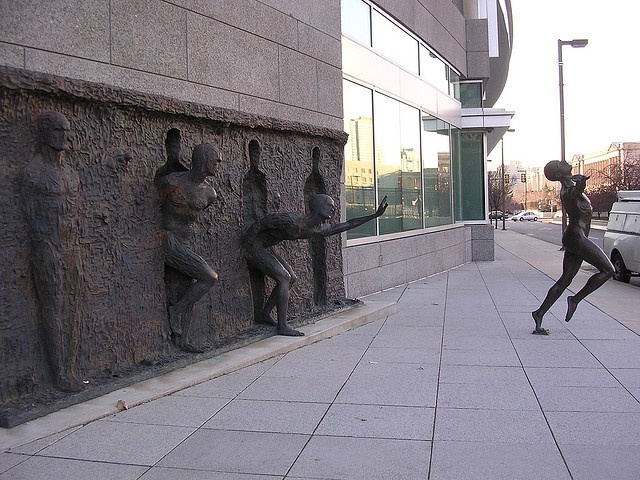
In working on the large scale sculpture, I was satisfied that those who drove by getting a quick look at it would see the big picture: that it was about escape. I was also concerned that those who worked in the building and who passed the sculpture frequently would have something more to see. There was a lot of empty space between the figures on the wall, which I saw as an opportunity to develop further ideas.
It was important to me that the sculpture have more than one theme going on at once. One of the other major ideas incorporated in the work is that the very process of creating the sculpture is clearly revealed in the work itself. The maquette is cast into the sculpture in the lower left hand corner. In the lower right corner is the cast of the sculptor’s hand holding the sculpture tool with two rolls of clay also cast in bronze. Throughout the background of the Wall, I have rolled out the clay and pressed it with my fingers so that my fingerprints are all over the sculpture. I have not hidden how I have made the piece. In fact, the whole idea of the macquette is enlarged so that all the figures in the background look like a giant macquette. And at the same time, as the figures move from left to right, I have shown how figures are developed when you are sculpting from the rough to the more finished product.
Elements of the sculpture trade beside the tools that are cast into the sculpture are calipers both for their use in measuring and their reference to Protagoras’ words “Man is the measure of all things.”
Also cast into the sculpture is an anatomical man, traditionally used as a reference by sculptors. Many of the heads and figures on the wall, some in the round and some in relief, are shown partially sculpted, revealing the process of creation.
Something else I have done with the sculpture is that I have created a one man show of my work. I have always admired Rodin’s Gates of Hell. I similarly thought I would incorporate many sculptures into the wall where it was suitable.
Like T.S. Eliot and other artists, I have put many personal elements in my work. My friend Philip, a sculptor who died of AIDS, created a work that I included in Freedom because he often expressed his wish to have it in a public space. He did not live long enough to accomplish this himself. My cat, who lived with me for 20 years, my mother, father, and my self portrait are in the work. It is obvious which face is mine because there is a ballooned phrase coming from my mouth with the word “freedom”, written backwards, making it clear that the face was sculpted in a mirror. I see the whole Wall sculpture as a kind of illusion akin to Alice’s Through the Looking Glass.
– Zenos Frudakis
在製作大型雕塑時,我很滿意那些通過快速瀏覽它的人會看到大局:它是關於逃避的。我還擔心那些在建築物中工作並經常通過雕塑的人會有更多東西可以看。牆上的人物之間有很多空白空間,我認為這是一個發展更多想法的機會。
對我來說重要的是雕塑有不止一個主題同時進行。在作品中融入的其他主要思想之一是,作品本身清晰地展現了創作雕塑的過程。模型被放入左下角的雕塑中。在右下角是雕塑家手中拿著雕塑工具的鑄件,兩個粘土卷也鑄成青銅。在整個牆壁的背景下,我已經鋪開粘土並用手指按壓它,這樣我的指紋就遍布雕塑。我沒有隱藏我是如何製作這件作品的。事實上,整個macquette的想法被擴大,所以背景中的所有數字看起來像一個巨大的macquette。同時,當數字從左向右移動時,我已經展示了當你從粗糙產品雕刻到更完成的產品時數字是如何形成的。
雕塑交易的元素除了鑄造在雕塑中的工具之外,還有卡尺用於測量和參考普羅塔哥拉斯的文字“人是萬物的衡量標準”。
雕塑中還有一個解剖學家,傳統上被雕刻家用作參考。牆上的許多頭部和人物,一些在圓形中,一些在浮雕中,顯示出部分雕刻,揭示了創作的過程。
我對雕塑所做的其他事情是我創作了一個單人作品。我一直欽佩羅丹的地獄之門。我同樣認為我會把許多雕塑融入適合的牆壁。
像T.S.艾略特和其他藝術家,我在我的作品中加入了許多個人元素。我的朋友菲利普是一位死於艾滋病的雕刻家,他創作了一部我自由的作品,因為他經常表達他希望將它放在公共場所。他沒有足夠長的時間來完成這件事。和我一起生活了20年的貓,我的母親,父親和我的自畫像都在工作中。很明顯哪張臉是我的,因為我的嘴里傳來一個帶有“自由”字樣的氣球,向後寫著,清楚地表明這張臉是用鏡子雕刻的。我認為整個牆壁雕塑是一種類似於愛麗絲透過鏡子的幻覺。
– Zenos Frudakis
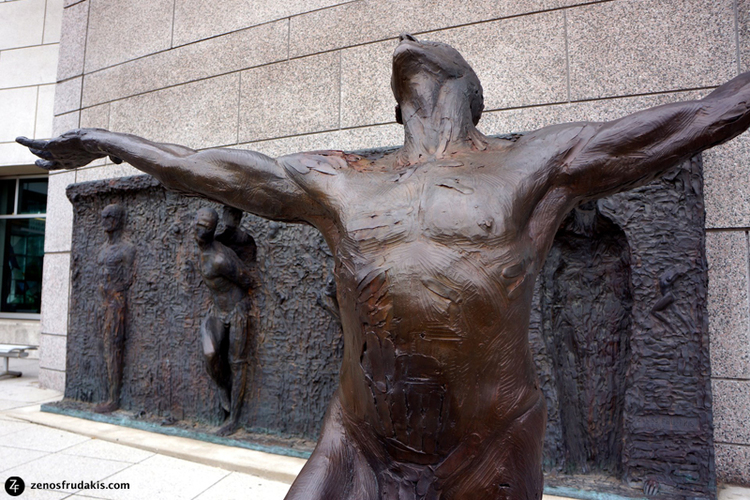
The sculpture contains an original Duane Hanson— a bronze cast of my own hands that Duane cast for me as a gift.
Much of what I did with this sculpture has to do with taking traditional forms and combining them in non-traditional ways, forming a postmodern sensibility. For example, I dropped a wax cast of my father’s bust from two or three feet in height so that it broke into large pieces. I cast those into the wall in a fractured manner over another face, an old work I found in a vat of clay purchased from a sculptor who had long ago died.
I have hidden many things in the background for people who see the sculpture more than once to discover, such as a cast of coins—a nickel and two pennies, another nickel and two pennies, and two quarters and a penny. These represent not only the relationship between money and art, but the numerals 7-7-51, my birth date.
It is important to me that the public interact with the sculpture, not just intellectually and emotionally but physically. I have created a space in which I have written “stand here” so that people can place themselves inside the sculpture and become part of the composition.
In the end, this sculpture is a statement about the artist’s attempt to free himself from the constraints of mortality through a long lasting creative form.
– Zenos Frudakis
雕塑中有一個原創的Duane Hanson-我親手製作的青銅演員,杜安為我演繹了禮物。
我對這件雕塑所做的大部分工作都與傳統形式有關,並以非傳統方式將它們結合起來,形成了後現代的感性。例如,我從兩三英尺高的地方扔掉了父親胸部的蠟鑄件,以便它變成大塊。我把它們以一種破碎的方式扔在另一張臉上的牆上,這是我從一位很久以前死去的雕塑家那裡購買的一桶粘土中發現的一件舊作品。
對於那些不止一次看到雕塑的人來說,我隱藏了很多東西,例如硬幣鑄造 – 一個鎳幣和兩個便士,另一個鎳和兩個便士,以及兩個季度和一分錢。這些不僅代表了金錢和藝術之間的關係,而且代表了數字7-7-51,我的出生日期。
對我來說,重要的是公眾與雕塑互動,不僅僅是在智力和情感上,而是在身體上。我創造了一個空間,我在其中寫下“站在這裡”,這樣人們就可以將自己置於雕塑中並成為構圖的一部分。
最後,這個雕塑是關於藝術家試圖通過持久的創作形式擺脫死亡限制的嘗試。
– Zenos Frudakis
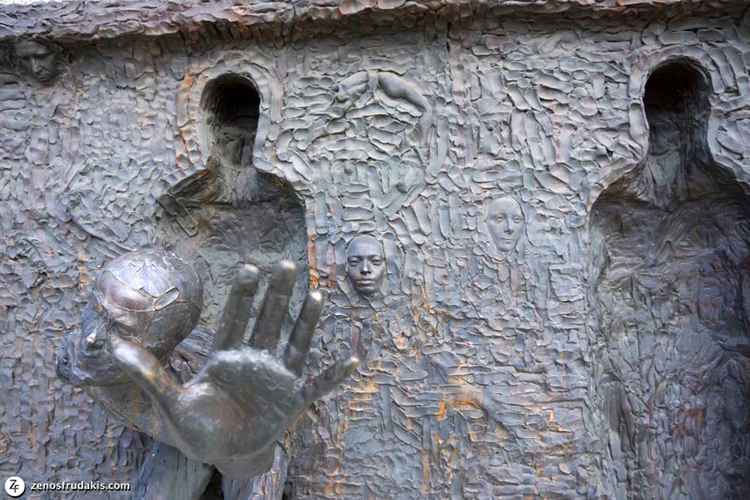
FROM:http://www.zenosfrudakis.com/freedom-sculpture
FROM:Freedom sculpture by Zenos Frudakis
Don’t you think it’s addictive?
Want to know more about the beauty of architecture?
Come and join our members to explore the beauty of architectural design.
覺得看得不過癮嗎?
想要知道更多建築之美嗎?
快來加入我們的會員,一同探索建築設計之美。
The above article is purely for appreciation and sharing purposes, as well as the construction of new technology and the public can be in-depth understanding of the information at the same time there are sources, will be able to query, no use of the document as a commercial transaction, if illegal, please inform the We will immediately remove the site, thank you for cooperation.
以上文章純粹作為欣賞及分享用途,以及將建築新型技術傳遞給與大眾能夠深入了解,同時資料還有來源,將可查詢,絕無使用該文件資料作為商業交易行為,如有違法請務必告知該網站我們將立即處理撤除,謝謝合作。

